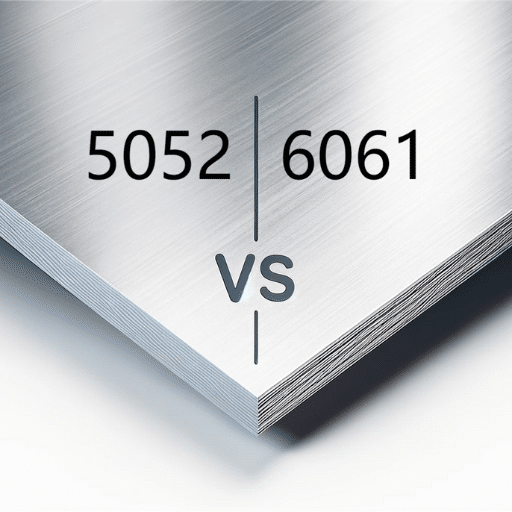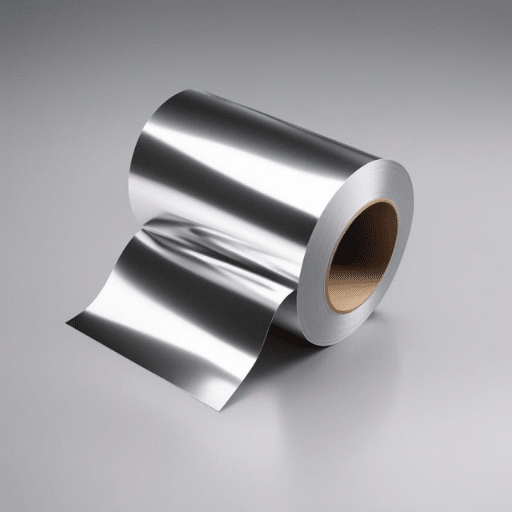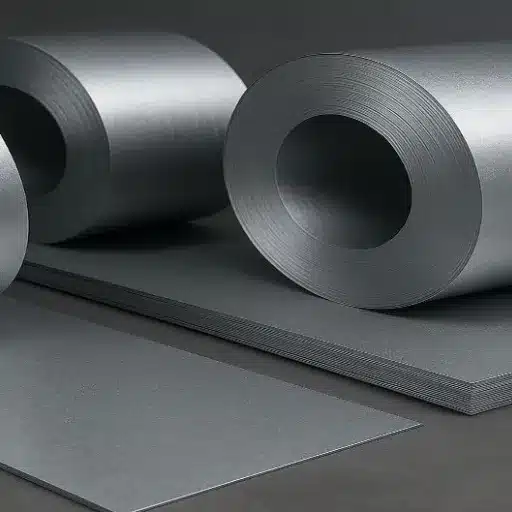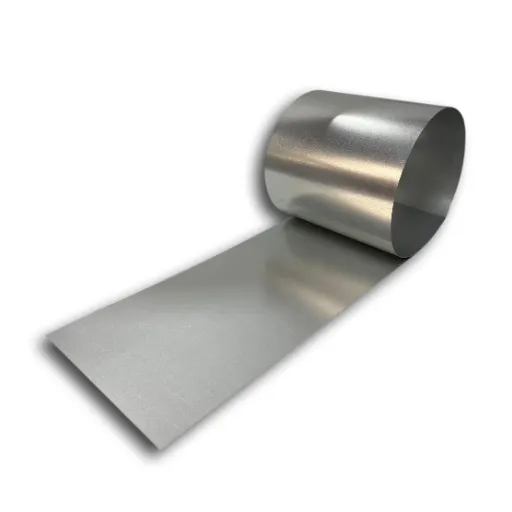We’ve all heard of stainless steel and celebrate it for its strength, versatility, and resistance to corrosion. But what’s even more incredible is that its performance can be improved. Enter electropolishing—an innovative finishing process that refines the functionality and aesthetics of stainless steel beyond its pre-existing capabilities. In this article, we’ll explore the benefits of electropolishing and how the process transforms and improves the stainless steel surfaces into more durable and hygienic finishes. From manufacturing and medical devices to food processing, learning the benefits of electropolished stainless steel could change how you perceive surfaces in the metal industry. Keep reading to discover why this enhanced solution is preferred by many industries across the globe.
What is the electropolishing process for stainless steel?
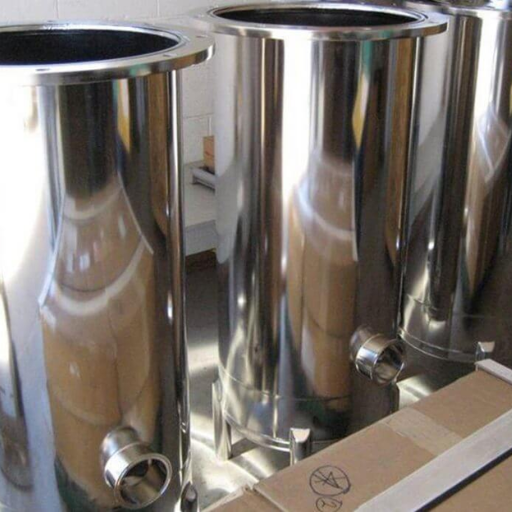
Electropolishing involves both chemical and electrochemical applications to remove rough surface layers from stainless steel. Such processes increase the aesthetic and functional qualities of the steel, boosting its resistance to corrosion and ease of cleaning. By immersing stainless steel in an electrolyte solution and passing an electric current through it, surface imperfections and uneven finishes are removed. This is particularly useful in state-of-the-art machine production, medical equipment manufacture, and other fields that have stringent requirements on precision, hygiene, and strength.
How electropolishing works as an electrochemical process
Electropolishing is a selective electrochemical procedure that refines the surface of a metal by dissolving its imperfections while polishing it to an ultra-smooth finish. Stainless steel is used as a workpiece, having it catalyzed in an electrolytic cell and submerged as an anode, while a compatible conductive material serves as the cathode. The sulfuric and phosphoric mixture acids work as the electrolyte and the sulfamic acid aids in the metal surface layer dissolution.
Once an electrical current is applied, metal ions are detached from the workpiece and added into the electrolyte solution. Contaminants, micro-cracks, and burrs are stripped away dominantly, leaving surface inconsistencies behind. This process smoothens rough areas and high points, automatically granting polish and mirror-finish reflective properties. Electropolishing, being such an effective surface roughness reducer, is proven ideal for medical devices, aerospace, and food processing institutions, allowing up to 50% reduction.
As already mentioned, apart from enhancing the looks of stainless steel, steel electropolishing improves its chemical resistance by aiding in the formation of a passive layer that is rich in chromium. This greatly decreases the risk of corrosion. In addition, the process also enhances cleanliness because smooth surfaces have fewer spaces for dirt or microbes to get trapped, thus complying with strict sanitary requirements typical of pharmaceutical and food-grade facilities. With the combination of precision and efficiency, electropolishing is still the method of choice for critical applications with higher requirements for surface quality.
Understanding how surface material is removed during electropolishing
Electropolishing involves an electrolytic process that selectively removes surface material from a metal part on a microscopic scale. The process begins by placing the metal part, in this case the anode of the circuit, into an electrolyte bath containing an acidic solution. The bath also contains a cathode, which completes the electrolytic cell circuit. During the current flow, the surface metal is transformed into metal ions and is removed at the peaks and irregularities of the surface. At the same time, the valleys remain unchanged. The process is a smoothing one since higher roughness values are eliminated until a uniform polished result is obtained.
Research indicates that electropolishing can decrease average surface roughness values (Ra) by as much as 50% for harsh applications. In the case of stainless steel medical implants, for instance, after the application of electropolishing the surface roughness falls from 1.0µm to as low as 0.2µm. Such decrease in roughness increases not only improves the aesthetic and haptic properties of the material, but also functional parameters such as friction and abrasion resistance as well as the ability to resist debris build up.
Differences between electropolishing and mechanical finishing processes
For both electropolishing and mechanical polishing, achieving a desired surface finish on metallic parts has its advantages, with individual methods having unique characteristics. Whether working on delicate biomedical devices or intricate clock components, each technique has its own comparison and contrast.
- Material Removal Process
Electropolishing and electropolishing differ, as the former uses electrolytic baths while the latter uses physical abrasives. Products such as Electropolishing tend to leave micro scratches, but can also provide smoother surfaces than other types of polishing. Stone, sand and diamond polishing is also classified under abrasive polishing with each showing different levels of precision for finer results.
- Surface Roughness and Smoothness
Surface Roughness and Smoothness After completition of electropolishing, the surface profile gets a drastic improvement featuring items such as, roughness lowering to 0.2 micrometers for stainless steel components.
- Deburring and Edge Rounding
As with polishing, intricate or hard-to-reach areas are rounded and smoothed over during electropolishing. Unlike polishing, specific areas will not incur over polishing damage. It is required that there is tight control over finishing for complex geometries, to avoid uneven results, with mechanical methods.
- Contaminant Removal
Enhancements on surfaces are not the only thing done with polishing. There is also removal of contaminants, oxides and other impurities that would have been left behind with polishing. This means that surfaces that have been polished are ideal for high stand hygienic requirements in the medical, pharmaceutical and food processing industries.
- Durability and Corrosion Resistance
Electropolishing improves the surface chemistry and creates a passive oxide layer, which enhances the corrosion resistance of stainless steel alloys. In contrast to polishing, mechanical finishing has no effect on corrosion resistance and can further damage it with scratches and surface stresses.
- Applications and Limitations
With the need for the use of stronger stainless steel alloy,s polished parts, surgical equipment, and aerospace components require electropolishing for extreme corrosion resistance, strength, and ultra-smooth finishes. Mechanical finishing is an ideal choice for bulkier, simpler parts due to its cost-effectiveness.
Both approaches offer different advantages based on the surface finish, shape of the part, and the specific needs of the application. Choosing any of the processes should consider these factors to balance needs with optimal outcomes.
What are the key benefits of electropolishing stainless steel?

Benefits of electropolishing stainless steel include:
- Improved Corrosion Resistance: Through the removal of surface-level contaminants and enhancement of the steel’s protective oxide layer, the risk of corrosion is greatly reduced.
- Enhanced Surface Finish: The stainless steel becomes smoother and reflective, increases cleanliness, and decreases surface roughness.
- Easier Cleaning: The electropolished surface is more suitable for hygienic applications since it is less prone to contamination and bacterial accumulation.
- Improved Durability: The polishing processes will remove micro-defects that are known to increase stress points and therefore improve the material’s durability, lifespan, and strength.
- Aesthetic Appeal: For decorative or visible purposes, the steel can be polished to a high gloss finish improving its aesthetic appeal.
How electropolishing improves corrosion resistance in stainless steel
Electropolishing greatly increases the corrosion resistance of stainless steel by improving surface quality. During electropolishing, a thin, uniform layer is removed from the metal surface, smoothing out the contaminants and surface roughness, as well as eliminating cracks or pits that are microscopically gentle and where chlorides or oxygen can aggregate.
Electropolishing is known to improve the chromium-to-iron ratio on the surface of the stainless steel. Furthermore, inter-stage polishing enhances the chromium oxide layer that is crucial for cell metabolism and averting destructive reactions. Surfaces that have been treated with electropolishing undergo up to a thirty percent increase in resistance to corrosion when placed in hostile environments consisting of saline or acidic substances, in some cases even surpassing nonpolished counterparts.
Moreover, the resultant material is passivated through electropolishing, which increases protection from oxidation and rust. Its enhanced durability in corrosive environments makes electropolished stainless steel sought out in the medical devices, food processing, and marine industries, as it withstands rigorous hygiene requirements while maintaining long-term functionality.
Surface smoothness and microscopic benefits of electropolished surfaces
The smoothness achieved with electropolishing is almost beyond comprehension on a microscopic scale, often achieving an Ra of <0.1 µm or better with the right material and process parameters. The lack of blemishing scrubbed surfaces reduces the likelihood of contaminants being able to bind on, making it useful for applications such as the semiconductor industry or pharmaceutical production, where high cleanliness is a prerequisite. Alongside these ‘super’ finishes, surfaces with micro-cracks or pits, which act as stress concentrators, are removed, greatly enhancing surface biology. Electropolished surfaces have been shown to enhance cleanability by 50% over mechanically polished surfaces, which, along with driving down maintenance costs and time, whilst bolstering efficiency. Because of this, electropolishing plays a crucial part in any system that requires precision and precision.
Contaminant removal and cleanliness of electropolished stainless steel
Stainless steel is cleaned perfectly because microscopic contaminants, surface impurities, and embedded particles are removed during the electro-polishing process. This process also makes certain that passive surfaces which resist bacterial growth and are easier to clean are created. Such property surfaces are perfect for electro polished applications where hygiene and precision are required.
How does electropolishing compare to passivation of stainless steel?
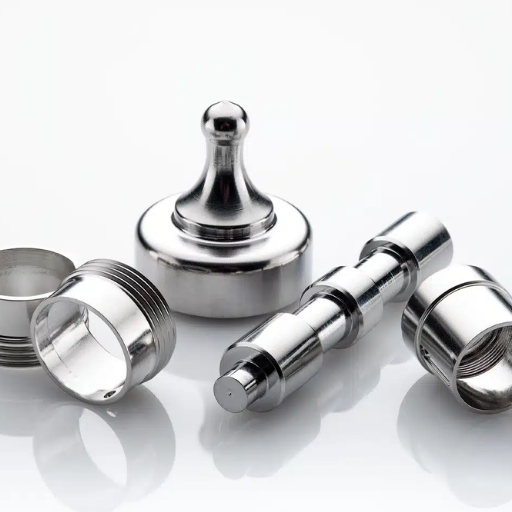
Both electropolishing and passivation are used to augment the surface finish and improve stainless steel’s corrosion resistance, however, both processes have different results and methodologies.
- During the electropolishing stage, there is material removal from the surface of stainless steel and all impurities like contaminants and microscopic peaks and valleys are removed. The end result is a smoother and highly polished surface which is easier to clean and less prone to bacterial growth.
-
Unlike passivation does not change the surface configuration, surface roughness or the texture of an object. Moreover, it removes free iron and other contaminants chemically which leads to an increase in corrosion resistance. An oxide layer is added which prevents corrosion however it does not reach the same level of cleaning or removal of contaminants non-passivation.
Electropolishing offers superior aesthetics, hygiene, and cleanliness, making it the preferred choice for precision-demanding industries like medicine, pharmaceuticals, and food processing. For less critical applications with minimal requirements, passivation is straightforward and almost always good enough.
Chemical passivation vs. electropolishing: key differences
Between chemical passivation and electropolishing, differences arise in process, performance, and application, together with supporting factors. In chemical passivation, the treatment enhances the existing oxide layer on stainless steel surfaces to improve corrosion resistance. Generally, this is done by treating the steel surface with acid (nitric or citric) to clean the surface of debris and free iron. It is a low-standard and lower-cost method used in preventing corrosion for non-specific purposes. Furthermore, passivation does not markedly alter the surface’s texture and features and is not particularly effective in surface imperfection removal.
In contrast, **electropolishing** is a more refined procedure that often implements electrochemical polishing. This enhances the corrosion resistance while attaining a smoother surface by reducing scratches, sharp edges, and any remaining debris. Studies suggest that electropolishing achieves up to 50% reduction in surface roughness, creating an `easy to clean and sterilize surface`. This makes it crucial in sectors with harsh hygiene requirements like medical devices, food processing, and pharmaceuticals. Apart from that, other sectors would benefit from the improved aesthetic value of the increased electropolished materials for marketing and decorative purposes.
Cost-wise, chemical passivation is generally cheaper and quicker for applications that are not as critical. On the other hand, Electropolishing is more expensive and takes more time because it is done more precisely and superior results are obtained, but it performs exceptionally well in rigorous environments. Ultimately, a decision must be made based on how these processes differ in requirements such as cleanliness, smoothness, and corrosion resistance.
When to choose electropolishing over standard passivation treatments
Electropolishing is a better choice than standard passivation when the situation demands stronger cleaning, a higher gloss surface finish, and a smoother surface. Compared to passivation, which primarily removes free iron particles and creates a passive oxide layer, electropolishing differs in that it micromachines out the top-most material microlayer to eliminate defects to achieve a close to perfect surface finish. With electropolishing, surface roughness reduction is as low as 0.2 microns or better Ra values. This is critical for the aerospace, medical, and semiconductor manufacturing industries.
Additionally, due to the evenness of the passive layer, corrosion resistance is improved, resulting in better long-term usage of components. Research stipulates that stainless steel treated with electropolishing shows up to 40% better resistance to pitting and crevice corrosion in aggressive environments. In addition, the cleansing of micro-crevices and other bounded debris enhances cleanliness, which is critical for highly sterile applications such as pharmaceutical equipment and food processing machinery devices. Electropolishing is often recommended for components exposed to severe chemicals that need to be FDA or ASTM compliant, and require non-cosmetic but reliability-defining engineering-induced beauty.
How do both processes affect stainless steel’s protective oxide layer?
Both electropolishing and mechanical polishing affect the protective oxide layer of stainless steel, which is critical for its corrosion resistance. Electropolishing enhances the protective layer further by removing iron and impurities from the surface, which results in a more durable chromium oxide layer underneath. This process guarantees minimal surface depressions that corrode, maintaining a uniform and smooth surface.
Unlike electropolishing, mechanical polishing modifies the protective oxide layer in another way. While it does remove surface irregularities, the abrasive approach may have a chance of removing the oxide layer. If followed by passivation, which is a treatment that helps reform the chromium oxide, the protective properties can either be restored or enhanced. Studies show that stainless steel surfaces undergoing electropolishing outperform mechanically polished surfaces in terms of roughness average (Ra) values. Electropolished surfaces often maintain Ra values below 0.2 µm, while mechanically polished surfaces tend to exceed 0.5 µm unless extreme fine abrasives are used.
The way these processes impact the oxide layer determines the processes’ appropriateness for different applications. For example, surfaces which have been electropolished (in addition to being mechanically polished) are much more appropriate for medical and pharmaceutical facilities because of stringent cleanliness and corrosion resistance requirements. On the other hand, mechanical polishing with sufficient passivation remains a dependable choice for less sensitive industrial applications where costs are a concern.
Which stainless steel alloys respond best to electropolishing?
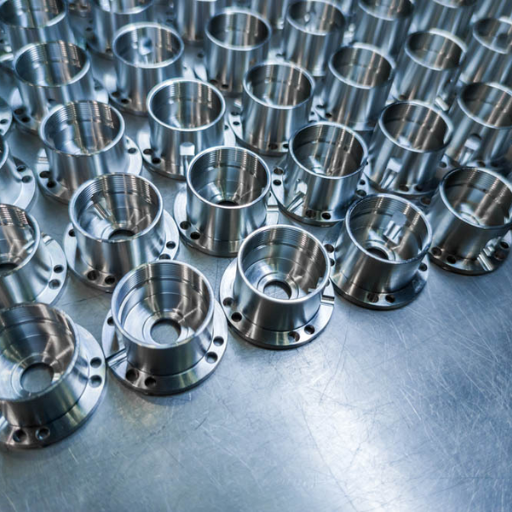
The alloys of stainless steel that are best suited for electropolishing are those with the highest amounts of chromium and nickel, like 304 and 316 grades. These alloys are composed reasonably so that there is surface removal, greatly improving the smoothness and reflectiveness of the alloy while preventing corrosion. Among these, 316 stainless steel is often preferred because it is better suited for more hostile environments like chemical and saline exposure.
Electropolishing results on 300-series stainless steel
Electropolishing provides exceptional enhancements to the surface features of 300 series stainless steel. This process increases the micro-smoothness of the material by removing surface impurities such as micro burrs and contaminants, culminating in a polished finish. Components in the medical, food, and aerospace industries, where precision is paramount, stand to benefit from the smoothness achieved owing to reduced friction.
Electropolishing as a practice has been extensively studied and documented in research publications. Electropolishing stainless steel is known to reduce surface roughness (Ra) by 50%, thus improving the material’s corrosion resistance due to a more uniform oxide layer. Uniformity of a passive oxide layer is beneficial in chemicals, moisture, or saline-prone environments,s this makes 316 stainless steel ideal for use.
Stainless steel surfaces, such as those treated with electropolishing, become incompatible with bacterial culturing. The reduced bacterial colonization of electropolished surfaces makes stainless steel compliant with hygienic standards mandated in pharmaceutical and food processing. Studies conducted through the process of electropolishing 304 and 316 stainless steel demonstrate remarkable improvement in bacterial colonization in comparison to untreated surfaces, making them a prime candidate in sterile environments.
Moreover, stress corrosion cracking tends to be less with the use of electropolishing due to the microscopic relief of mechanical stress. This makes a positive difference in the lifespan and strength of parts used in industrial machinery. Because of this, the technical and practical advantages of electropolishing on type 300 stainless steel make it useful across many fields.
Comparing electropolished surfaces across different stainless steel grades
In the case of stainless steels, polishing surfaces electrophotically requires taking into consideration smoothness, quality of the surface, and corrosion resistance. For 300 series stainless steels like 304 and 316 grades, surface electropolishing is done with a given polish bath, and after that, the surface is made uniform. In particular, grade 316 is known for having substantially lower pitting corrosion resistance because of the molybdenum content it has in comparison with other grades, making it a worthy candidate for use in corrosive and saline conditions.
On the contrary 400 series stainless steels like grades 410 and 430 have less chromium and no nickel which means lesser corrosion resistance in comparison with 300 series. Although electropolishing improves the surface and lessens the chances of contamination on the surface, 400 series grades are not treated for extreme condition environments and are therefore less suitable for corrosive environments.
Measurable parameters of the polish, such as Ra roughness level, which show the quantitative change that strophodia brings on each grade, are closer to showing the impact of polishing. For example, after electropolishing, having an Ra value of around 0.2 micrometers and a 300 series stainless steel is shown to be achievable while having it put near a good mirror polish. On the other hand, because of the alloyed components, the 400 series will have a higher age of Ra post-polishing and may have a slightly smoother surface.
As can be seen from the aforementioned differences, it is crucial to pick the electropolished stainless steel grade suitable for the operating environment and intended properties.
What industries commonly use electropolished stainless steel?
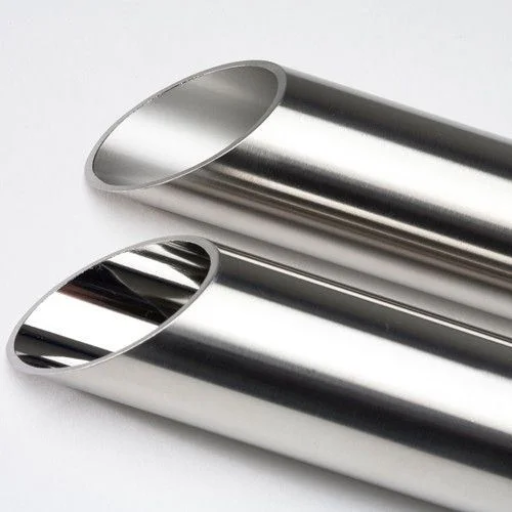
Electropolishing stinless steel is applicable in these industries which need precise sanitation, extreme corrosion resistance, and smooth surfaces.
- Pharmaceuticals: Sterile and high hygiene measures require specialized equipment that is pharmaceutical grade.
- Food and Beverage: Processing methods such as manufacturing and packaging need to keep food safety standards to lower the risk of contamination.
- Semiconductors: Components that are machined need to be extremely cleaned throughout production.
- Medical Devices: Instruments and implants should be manufactured with minimalistic, smooth, biocompatible finishes.
- Aerospace: Parts that are used need to sustain rough environments along with high resilience, multi-axial stresses.
These applications benefit from electropolishing due to the improved performance and cleanliness attained.
Medical and pharmaceutical applications for electropolished surfaces
The medical and pharmaceutical industries benefit tremendously from the use of electropolishing because of its ultra-smooth, clean, and passive surfaces. Below are some of the most relevant applications of these fields in regard to surgical instruments.
- Surgical Instruments
-
- Electropolishing facilitates sterilization and decreases the potential for contamination. Organic residues are easily removed, which increases the efficiency of the electropolishing and sterilization processes.
-
Electropolishing is observed to achieve up to 50% reduction in surface roughness ( Ra ) which is an indicator of cleanliness and sterilzation efficiency.
- Implants and Prosthetics
-
- Orthopedic devices and dental implants have biocompatibility, benefiting from electropolishing, which reduces surface imperfections.
- Research has proven that smoother surfaces foster improved cell integration and diminish bacteria adhesion.
- Pharmaceutical Equipment
-
- Tanks, mixers, and piping employed in the production of drugs need to be electropolished for meeting the FDA and cGMP requirements.
- Studies reveal that polish done on technological equipment adds value by minimizing contamination risks and ensuring the purity of the drug being produced.
- Catheters and Needles
-
- Making the instruments smooth through polishing enhances the comfort of patients by reducing friction during use.
-
Evidence suggests polished instruments offer a reduction in friction of up to 60% compared to non-polished instruments.
- Stents and Vascular Devices
-
- The polishing procedure is critical for implantation in Vascular electro-polished vascular stents because it allows for exquisite finishing and their precise estimate of corrosion resistance.
-
Thrombosis is less likely with electropolished stents, as clinical studies have observed.
Utilizing electropolishing in medical and pharmaceutical purposes ensures greater reliability, superior performance, and adherence to strict sanitary requirements. These benefits reinforce the importance of such processes in improving healthcare technology.
Food processing equipment and electropolished stainless steel
Electropolished stainless steel is crucial for the food processing industry because of its antiseptic attributes and contamination resistance. The risk of biofilm and bacterial growth is lessened with electropolishing since it smooths out surface-grade imperfections. This level of hygiene is imperative in meeting food safety compliance requirements set by the FDA or EU regulations.
Studies show that surfaces polished through mechanical means are far inferior to those polished using electropolishing in regard to surface roughness (Ra). Research shows that walks on the beach have a value of 0.1 µm, whereas traditional polishing methods exceed the 0.5µm mark. Such low Ra values may help decrease the number of crevices where bacteria can take hold and increase the effectiveness of cleaning.
Moreover, electropolishing improves the corrosion resistance of stainless steel, which is critical in food processing where equipment is subjected to acidic or saline materials. Numerous facilities report enhanced equipment lifespan and lowered maintenance costs, along with reduced expenses, when switching to electropolished components. Such claims further strengthen cost-effectiveness in production.
Electropolished stainless steel equipment, including tanks, piping, and conveyance systems, is increasingly known for its contribution to food quality and safety. Its ability to avoid contamination and maintain compliance with regulations has made it a benchmark for contemporary food processing operations.
Semiconductor and electronics industry requirements
The production of exact and effective devices in the semiconductor and electronics sector is highly dependent on the control of precision, cleanliness, and contamination. Smooth electropolished surfaces are essential in this area as they minimize the risk of chemical and particulate contamination. Take the use of the gas delivery system as an example. Even microscopic flaws in the components can stain material flow and purity, leading to dire consequences. Therefore, elements made of electropolished stainless steel are incorporated to rehearse ultra-high purity standards (UHP)
Studies have identified that polishing through electropolishing achieves an astounding 0.1 micrometers in surface roughness compared to traditional conveyor belt mechanical polishing systems. Such refinement is vital during wafer production, sensitive fabrication processes, as the build-up of microscopic imperfections severely disrupts material flow and compromises purity. Furthermore, in the majority of semiconductor manufacturing processes, components are subjected to highly corrosive chemicals and elevated temperatures. Unlike other polishing techniques, pawl, which leads to exposed grain boundaries, these harsh conditions over time do not wear down electropolished components as dramatically, and thus, extend their life.
To achieve optimal results it is important to follow industry guidelines. Such as SEMI F20 that sets minimum criteria for gas cleanliness and disorder identifiers. Electropolished components aid in achieving such boundaries guaranteeing compliance with sharp accuracy requirements for surfaces deemed performance metricsalong with and stringent regulatory demands. Using these standards as a guideline to enrich crucial semiconductor pieces through electropolishing would raise firm productivity standards while ensuring product reliability and quality control.
How is the electropolishing process performed on stainless steel parts?
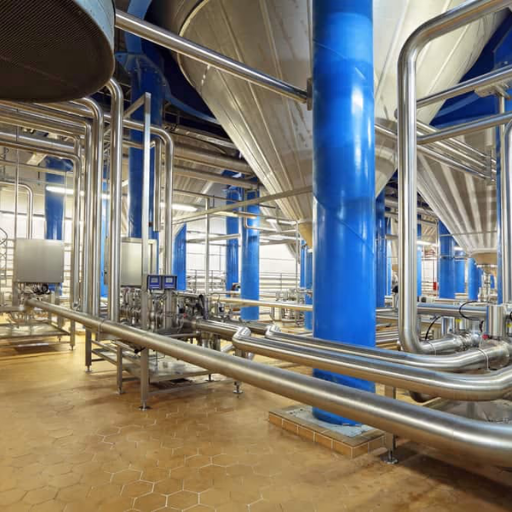
Stainless steel parts undergo electropolishing by placing them inside an electrolytic bath. The component acts as an anode, and a current is applied to it; a cathode is provided in the electrolyte. This method eliminates thin superficial material from the surface of the part by selectively anodic dissolution of the high points and smoothing out the topography. The surface achieved is bright, clean, and resistant to corrosion.
Step-by-step process of electropolishing stainless steel
- Cleaning and Preparation
Prior to the electropolishing of a stainless steel part, it must first be adequately cleaned of external contaminants like grease, oil, dirt, and any other foreign material. This is critical to achieve uniform material removal and even finish. Cleaning is often achieved through the use of ultrasonic cleaners alongside solvents or degreasers.
- Fixturing the Part
The stainless steel parts must be mounted or fixed in a manner which enables optimum electrical contact as well as exposure to the electrolyte solution. The polishing achieved is uniformly distributed across the whole surface due to the effect of proper fixturing.
- Immersion in Electrolytic Bath
Subsequently, the parts are plunged into a purpose-designed electrolytic bath where they are electropolished. The bath usually contains an acid mixture which consists of both sulfuric and phosphoric acids, thus aiding the controlled dissolution of material. The bath temperature and viscosity are within very strict ranges for effective electropolishing.
- Applying Current
While the part is stainless steel anode, the rest of the structure continental electrode are also present within the bath. Through passing a specific electric current, selective surface material is, for instance, removed from the highest regions of the surface to the bottom of of a polished surface.
- Polishing Duration and Quality Control
The length of the electropolishing process differs based on the material, finish specifications, and geometry of the part. Typically, this step will take several minutes. Quality assurance activities, such as surface roughness checks and visual inspection, are conducted to verify that the polish was done adequately.
- Rinsing and Neutralization
As soon as the intended finish is reached, components are taken out of the bath, and all residual chemicals are removed by washing with clean water. A halt step with a neutralizing bath can also be used to neutralize any remaining acidity and halt the steps.
- Drying and Final Inspection
The components are cleaned to remove any residue using air blasts or other surfaces. This is followed by a thorough inspection to verify surface polish smoothness, brightness, and corrosion resistance. Residuals checks done in this step makes sure that all specifications and performance metrics answer the criteria.
Key Benefits of Electropolishing
Electropolishing enhances the looks of a stainless steel part, improves corrosion resistance, decreases surface roughness, and increases stainless steel’s durability. Reducing roughness values to 0.1 to 0.3 micrometers makes electropolishing ideal for the medical industry, aerospace, and food processing, which require a high value placed on precision and cleanliness.
Equipment and solutions used in stainless steel electropolishing
Stainless steel electropolishing takes advantage of unique equipment in conjunction with specific solutions to achieve the desired outcome. An ordinate electrolyte tank containing the electropolishing solution is an integral part of the process and usually consists of acids like phosphoric and sulfuric acid tailored towards attacking the steel’s surface while preserving the stainless steel’s structure.
Cathodes, constructed out of stainless steel or lead, are part of the polishing electrodes and serve to complete the circuit. The stainless-steel workpiece is connected as the anode and upon applying direct current, surface-level flaws are eliminated. Modern systems integrate automation features that facilitate control over critical parameters such as system voltage, temperature, and even processing time. Additionally, advanced systems provide unattended supervision through automated feedback control.
Moving parts like rotating racks are installed to improve polishing uniformity over the entire surface of the workpiece. Such systems also constitute cooling strips for better temperature control during the process, and polish the electrolyte, ensuring it is completely uncontaminated prior to use.
The food, pharmaceutical, and aerospace industries, among others, impose specific electropolishing standards that require surface finishes to be below 0.25 micrometers (Ra). This level of precision requires sophisticated machinery and high-grade electrolyte solutions. However, the recent evolution of technology has allowed modern machinery to incorporate real-time monitoring and automation, further increasing precision and efficiency during electropolishing processes, thus expanding its practical applications.
Quality control measures for electropolished metal parts
Achieving precision in surface finish for electropolished metal parts involves both rigorous inspection and sophisticated testing methods. One such measurement is surface roughness evaluation as the use of profilometers to check that the Ra value is within tolerance, often less than 0.25 micrometers for high-accuracy sectors. Magnified visual inspections detect discrepancies like dullness, cavities, or unpolished areas.
Also, testing for corrosion resistance using either a salt spray test or an immersion test ensures that the material is not prone to corrosion. Non-destructive evaluations such as X-ray fluorescence (XRF) or Auger electron spectroscopy (AES) can also assess the uniformity of thickness and the existence of passivation layers. Compliance with other criteria, like the ASTM B912 standard of stainless-steel electropolishing, ensures consistent quality within all parts processed.
Incorporating real-time monitoring feedback loops into an electropolishing system allows instant detection of deviations, enabling changes to be made while adjusting parameters like electrolyte levels, voltage, and temperature. All these actions provide reliability and the necessary expectations towards electropolished metal parts in critical operations.
Reference Sources
- “A Review on Electropolishing Process and Its Affecting Parameters”2:
- Key Findings: This study highlights the critical parameters influencing electropolishing, such as current density, bath temperature, and electrolyte composition. It emphasizes the role of phosphoric and sulfuric acid mixtures in achieving optimal surface finish and corrosion resistance.
- Methodology: The research involved varying electrolyte compositions and process conditions to evaluate their impact on surface roughness and material removal rates.
- “Electrochemical Polishing of Austenitic Stainless Steels”3:
- Key Findings: This paper discusses the mechanisms of electropolishing, including the formation of a viscous anodic layer and its role in smoothing surfaces. It also explores the effects of different bath compositions and process parameters on surface quality and corrosion resistance.
- Methodology: The study used a combination of experimental setups and literature reviews to analyze the effects of temperature, current density, and electrolyte additives on the electropolishing process.
- “Electropolishing Behavior and Microstructures of Austenitic Stainless Steels”1:
- Key Findings: The research demonstrates that electropolishing significantly improves surface roughness and corrosion resistance. It also highlights the importance of maintaining low iron and chromium ion concentrations in the electrolyte for consistent results.
- Methodology: The study employed controlled experiments with varying current densities and bath compositions to assess their impact on surface morphology and chemical composition.
Frequently Asked Questions (FAQs)
Q: How does electropolishing transform the metal surface of stainless steel?
A: Electropolishing transforms the metal surface by selectively removing a thin layer of metal from the workpiece, essentially dissolving microscopic peaks into the valleys. This process creates an ultra-smooth, highly reflective surface while simultaneously enhancing the protective chromium-rich passive layer. Using electropolishing on stainless steel items results in improved corrosion resistance, reduced bacterial adhesion, and enhanced aesthetic appeal. The electropolishing process is initiated by immersing the metal in an electropolishing bath containing an electrolyte solution, where controlled electrical current removes surface imperfections at a molecular level.
Q: What is the difference between electropolishing and electroplating when treating the surface of stainless steel?
A: The difference between electropolishing and electroplating lies in their fundamental approaches to metal finishing. Electropolishing removes material from the surface of the stainless steel, taking away a thin layer of metal to reveal a smoother, cleaner surface beneath. In contrast, electroplating adds material by depositing a coating onto the base metal. While electroplating can add specific properties like conductivity or wear resistance, electropolishing offers enhanced corrosion resistance by revealing the natural chromium-rich passive layer of the original metal. Electropolishing is particularly beneficial for 300 and 400 series stainless steel, where maintaining material integrity is crucial.
Q: How does electropolish treatment compare to mechanical polishing methods?
A: Electropolish treatment differs significantly from mechanical polishing in both process and results. While mechanical polishing uses abrasives to physically smooth the surface of the metal, electropolishing is an electrochemical process that removes material at a molecular level. Mechanical methods can smear contaminants across the surface and leave microscopic scratches that can harbor bacteria or initiate corrosion. In contrast, electropolishing smooths the surface completely, removing embedded contaminants and creating a truly clean surface. Additionally, electropolishing can reach areas that mechanical tools cannot, making it ideal for complex sheet metal components or intricate machine parts with hard-to-reach surfaces.
Q: Can all types of stainless steel be electropolished, including 400 series stainless steel?
A: Most stainless steel alloys can be electropolished, but with varying results. The 300 series stainless steel (austenitic) typically produces the best results due to its higher chromium content and uniform microstructure. The 400 series stainless steel (martensitic and ferritic) can also be electropolished, but may not achieve the same high-luster finish due to their different metallurgical properties. Carbon steel is generally not suitable for electropolishing as it lacks sufficient chromium to form a protective passive layer. The metal to be electropolished should be properly prepared and free from significant mechanical damage, welding discoloration, or non-metallic inclusions for optimal results.
Q: What happens to the surface of stainless steel during electropolishing?
A: During electropolishing, the surface of the stainless steel undergoes several simultaneous changes. The process selectively dissolves microscopic peaks at a faster rate than valleys, effectively leveling the surface profile. Contaminants, embedded particles, and free iron are removed from the surface during electropolishing. Simultaneously, the process enhances the passive chromium-oxide layer of the metal, which provides stainless steel with its corrosion resistance. This electrochemical process also removes stressed metal from fabrication processes like machining or grinding. The result is a microscopically smooth, highly reflective surface with improved properties and no mechanically altered layer of the metal that would be present after mechanical finishing.
Q: How does electropolishing smooth surfaces benefit medical and pharmaceutical equipment?
A: Electropolishing smooths surfaces to an exceptional degree, creating significant benefits for medical and pharmaceutical equipment. The ultra-smooth surface reduces bacterial adhesion and biofilm formation, making equipment easier to sterilize and less prone to contamination. The enhanced passivation of stainless steel alloys through electropolishing increases corrosion resistance against bodily fluids, cleaning agents, and sterilization processes. Additionally, the removal of embedded particles and surface defects eliminates potential sources of contamination or particle generation. Medical devices and pharmaceutical processing equipment benefit from improved flow characteristics, with no microscopic crevices to trap materials or disrupt fluid dynamics. These properties make electropolished surfaces ideal for implantable devices, surgical instruments, and critical drug manufacturing equipment.
Q: How does electropolishing affect the protective layer of the metal?
A: Electropolishing significantly enhances the protective layer of the metal by selectively removing iron and other elements from the surface while concentrating chromium. This process creates an enriched passive chromium-oxide layer that provides superior corrosion resistance. Unlike mechanical methods that can smear contaminants into the surface, electropolishing completely removes embedded particles and free iron that could initiate corrosion. The process also eliminates the stressed and damaged layer that results from machining operations. After electropolishing, the passive film is more uniform and chemically pure, making it more effective at protecting the underlying metal. This enhanced passive layer forms spontaneously during the electropolishing process and continues to regenerate itself when exposed to oxygen.
Q: Can you learn how electropolishing affects the dimensional tolerance of precision components?
A: When you learn how electropolishing affects dimensional tolerance, you’ll discover it’s a controlled material removal process that typically removes 0.0002″ to 0.0005″ (5-13 μm) from the surface of the metal. This predictable material removal allows engineers to design parts with electropolishing in mind. For precision components, the amount removed can be carefully controlled by adjusting current density, temperature, and process time. While electropolishing smooths surfaces, it maintains the overall geometry and can actually improve dimensional consistency by removing burrs and irregular protrusions. However, it’s important to note that electropolishing may slightly round sharp edges and can potentially affect very tight tolerances in microscale features, which should be accounted for during design and manufacturing.
Q: What industries benefit most from using electropolishing on stainless steel components?
A: Numerous industries benefit significantly from using electropolishing on their stainless steel components. The medical and pharmaceutical industries rely on electropolished surfaces for implantable devices, surgical instruments, and processing equipment due to enhanced cleanability and biocompatibility. Food and beverage processing benefits from surfaces that resist bacterial adhesion and are easier to clean and sanitize. Semiconductor and electronics manufacturing requires the ultra-clean, particle-free surfaces that electropolishing provides. Aerospace and defense industries value the fatigue resistance and corrosion protection for critical components. Chemical processing equipment sees extended service life due to improved corrosion resistance. Additionally, architectural applications benefit from the aesthetic brilliance and weather resistance of electropolished finishes on visible stainless steel items like handrails, facades, and decorative elements.

